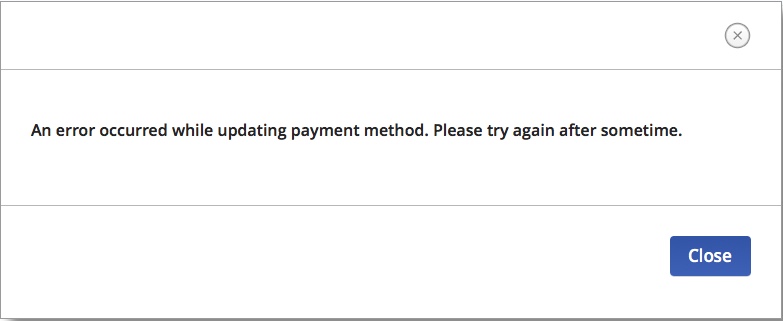My wife, Sally, and I really enjoy wine.
It's fun to explore new wineries and share both bottles and experiences with friends. So we were a little excited when I found a winery in Napa Valley that was looking for "investors."
The deal was enticing.
In exchange for investing a small amount of money into the winery, you would receive an estimated 6 percent annual return plus a few bonus perks such as free wine, wine discounts, and even business cards. The business cards were a huge perk since many Napa wineries offer benefits such as free tastings to people affiliated with the wine industry.
Naturally, we had two big questions before we invested.
Was the wine any good?
How was the customer experience?
To test both, I placed an order for two bottles. The process revealed a lot of clues about how the winery was managed.
Here's how that one experience told Sally and I all we needed to know.
The Purchase Experience
Texas was a key part of the winery's sales strategy. The state represents a growing market with a lot of wine enthusiasts, but has less competition than California.
So I went to the websites of two of Texas's biggest wine retailers, Total Wine and Spec's, and searched for the wine. Total Wine was sold out while Spec's didn't have anything from the winery listed.
A lack of inventory can easily drive customers to a competitor. You can't sell what you don't have.
So I went back to the winery's website and tried to place an order. The online store was not integrated into the website, and it took a bit of navigating to place my order. The order confirmation email arrived quickly, but did not confirm an expected delivery date.
Warning signs:
Lack of inventory in key market
Poor e-commerce experience
Fulfillment Time
Amazon is the product delivery benchmark for many of us. You can get purchases delivered the next day, sometimes even the same day, seven days a week.
The wine industry is a little different. Most smaller wineries typically ship purchases twice per week. Shipping time from Napa to my home in San Diego is about two days, so I expected delivery to take up to a week.
Two weeks went by and the wine had not arrived. I also had not heard from the winery.
List of warning signs so far:
Lack of inventory in key market
Poor e-commerce experience
Long delivery time
Lack of proactive delivery notices
Transactional Service
I sent a follow-up email to the company to check the status of my order. This could be a good thing in a way, since it would be an opportunity to try out the winery's customer service.
The CFO, Kevin, quickly responded:
My first question was, "Why is the CFO answering customer service email?" This might not be too unusual in a small winery, but it didn't make much sense in a winery that was looking to woo investors so it could grow into a powerhouse.
The other red flag was Kevin promised that my wine would ship the next day. Why not today? It seemed my order hadn't been a big priority until I raised an issue.
The warning signs list grows:
Lack of inventory in key market
Poor e-commerce experience
Long delivery time
Lack of proactive delivery notices
The CFO is answering customer service emails
Website orders aren't a priority
Poor Leadership
The warning signs had added up, so it was time to cut bait on this investment idea. I replied to Kevin and put my cards on the table, explaining that I had ordered the wine as a trial run while considering an investment.
That investment clearly wasn't going to happen, so I asked him to cancel my order. He quickly responded again:
Kevin inexplicably copied two other people on the email, Brandon and Kathleen. I have no idea who they are, though presumably they were employees tasked with stopping my shipment and issuing a refund.
Here's a guess, based on my experience working with executives like this. Copying those people on the email was Kevin's way of giving them an assignment. It's both inappropriate (why include the customer?) and potentially unclear to the employees.
Ten days passed and no refund. I emailed again to ask about the status. Kevin quickly replied to Brandon, copying me.
Whoa! Three problems here:
Who is Brandon?
Why is Kevin emailing him rather than replying to me?
It's Wednesday. Why will it take the CFO until Friday to process my refund?!
It was really further evidence of Kevin's poor leadership. He may have been frustrated with Brandon (who was copied on the last email) for not issuing the refund earlier. Or perhaps he thought he was being responsive by showing me that he had tasked this duty to Brandon.
None of that mattered. The CFO should have been able to issue a refund immediately.
The big list of warning signs:
Lack of inventory in key market
Poor e-commerce experience
Long delivery time
Lack of proactive delivery notices
The CFO is answering customer service emails
Orders aren't a priority
Poor executive leadership
Epilogue
Friday came and went with no refund. It had now been 30 days since I had placed more order and more than two weeks since Kevin promised a refund "ASAP."
I wound up disputing the charge with my credit card company since Kevin, Brandon, or whoever else was working there couldn't seem to get it done. Which tells me the winery may have some cashflow issues in addition to it's many other dysfunctions.
Sally and I were disappointed this investment idea didn't work out, but one test order told us this winery was probably going to struggle. You can learn a lot about a business when you view it from a customer's perspective.













